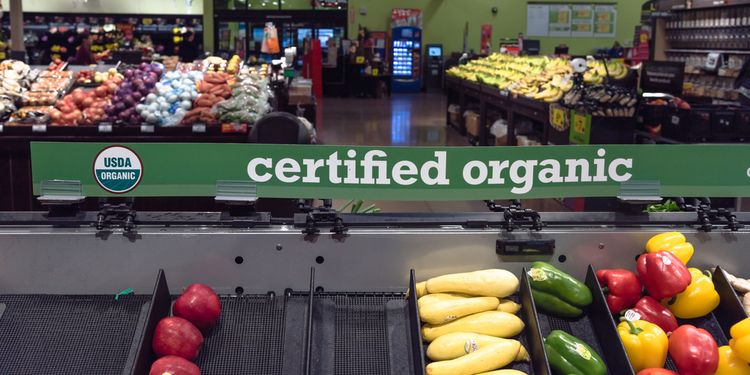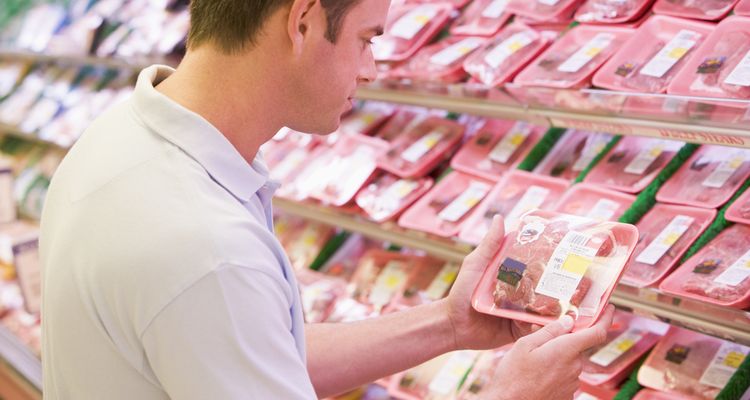Did You Know There Are Unlabeled Chemicals In Your Favorite Foods?

What you see isn’t always what you get.
This applies especially to food labels. While you can certainly learn a lot about a food product by reading its back label, you’re only getting part of the picture.
Seemingly healthy foods can be contaminated with all sorts of chemicals that won’t be listed on the label.
It probably goes without saying that none of these chemicals are good for your health. Despite the health risks, however, food manufacturers aren’t required to display any of these chemicals on the labels of their products.
If you want to live a healthy lifestyle, avoiding chemically contaminated food should be high on your priority list. Let’s look at how foods become contaminated and what steps you can take to reduce your chemical intake.
How Your Food is Contaminated with Chemicals

Livestock Production
The conventional livestock industry pumps animals full of antibiotics. These antibiotics keep the animals alive and disease-free amid inhumane, unhealthy (and usually downright disgusting) living conditions. In fact, many animals in these conditions are slaughtered just before they would have died from these horrible living conditions.
Animals are also often given steroids, hormones, and growth promoters so they’ll grow faster, and in the case of cows, produce more milk. To top it all off, the feed given to these animals is often full of chemicals and pesticides.
All these toxins (antibiotics, steroids, pesticides, etc.) accumulate in the fat of the animals, and then transfer to our bodies when we eat them.

Pesticides
Pesticide use has revolutionized the farming industry in the last 100 years, allowing us to grow food more efficiently than ever before.
However, the pesticides used often remain on the food we eat. In 2014, US Department of Agriculture inspections found at least one pesticide on nearly 75% of the foods tested. Some manufacturing processes spray foods with pesticides post-harvest as well.
Allow me to state the obvious— consuming pesticides isn’t good for your health! They’ve been linked to cancer, hormone disruption, skin, eye, and lung irritation, and toxicity in the brain and nervous system.
During Processing
Foods are often exposed to a host of harmful chemicals during the trip from the farm to the table. During both shipping and storage, foods are often sprayed with chemical cleaners, fungicides, and more pesticides.

After Purchase
After purchase means once the food is in your hands. That’s right! You may also be responsible for chemically contaminating the food you eat.
How, you ask? It’s all in what you use to cook, serve, and store your food!
Non-stick pots, pans, bakeware, and utensils all contain Teflon, a substance made from what are known as perfluorinated compounds. Perfluorinated compounds have been linked to cancer and reproductive problems! These chemicals leach into your food, find their way into your bloodstream, and can take decades to get out.
After cooking, many people serve and store their food using plastic or Styrofoam containers, which have been shown to leach chemicals into food as well.
What Can I Do to Reduce My Chemical Exposure?

Eat Organic
Eating only USDA-certified organic foods will drastically cut down on your chemical exposure.
Now, I get it— eating organic is expensive, and many people simply can’t afford it. I have trouble managing it myself.
At the very least, avoid eating non-organic versions of the “Dirty Dozen,” the 12 fruits/vegetables classified by the Environmental Working Group (EWG) as the worst chemically contaminated.
These are (in order of worst contaminated): strawberries, apples, nectarines, peaches, celery, grapes, cherries, spinach, tomatoes, sweet bell peppers, cherry tomatoes, and cucumbers. Hot peppers, kale, and collard greens just barely missed the list, but they’re still typically highly contaminated.

The EWG also made of a list of the cleanest fruits/vegetables, known as the Clean Fifteen: avocados, sweet corn, pineapples, cabbage, frozen sweet peas, onions, asparagus, mangos, papayas, kiwi, eggplant, honeydew melon, grapefruit, cantaloupe, and cauliflower.
According to the EWG, you can lower your pesticide exposure by nearly 80% just by avoiding the Dirty Dozen and sticking with the Clean Fifteen.
Buying local produce will also cut down on chemical exposure. The less time/distance it took to get to you from the farm, the less chance it was exposed to chemicals during transport and storage. And let’s not forget that you can always grow your own produce! Nothing is more local than your own home.
Finally, avoid all factory- and conventionally-farmed meats, poultry, and dairy products as much as possible. Go with organic, grass-fed, free-range, wild-caught products instead— or catch/hunt your own!

Use Healthy Cookware
Avoid all non-stick pots, pans, bakeware, and utensils as much as possible.
While you’re at it, Dr. Frank Lipman recommends avoiding aluminum cookware (they may leach aluminum into your food), cracked/chipped ceramic dishware (lead-filled glaze may leach into your food), and dish racks made with plastic-coated wire.
Instead, use glass or ceramic bakeware and bowls and stainless steel and cast-iron pots and pans.
To store food, use glass containers instead of Styrofoam or plastic Tupperware. If you must use plastics, try to use only BPA-free plastics (labelled #1, 2, 4, or 5).
Finally, don’t microwave food in plastic containers, even if they’re labelled “microwave-safe,” and generally avoid using plastics to contain anything hot.

Summary
Food labels, though informative in many ways, are woefully incomplete.
Foods are often exposed to many different chemicals before they make it to your plate— and none of these chemicals will show up on the label.
By all means, continue to read food labels carefully! Just remember that most labels aren’t telling the whole story.
Think beyond what the label says. Where did the food come from? How was it grown? How was it stored?
Think critically, do your research, and follow the above guidelines and you’ll be well on your way to a chemical-free diet and a healthier, happier body!
